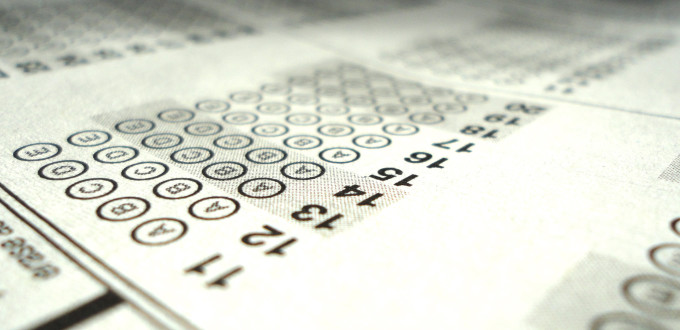
The SAT article in the first issue of the Here & Now focused on the hardships, stress, and inequality of standardized testing. But I would not write such a depressing and somewhat frightening article about all the problems with this test without leaving you with a glimmer of hope. This article will therefore discuss the plans that are currently underway to address the many issues surrounding the SAT.
Head of the College Board, David Coleman, has plans underway to make the test more equal for all students, as “it [inequality] may not be our [College Board’s] fault, but it is our problem.” College Board is calling this reworking of the SAT a “partial overhaul,” which should be in effect by spring 2016, making it quite relevant to current sophomores, as they will be the first year of students affected by the changes.
The question that I am sure is on all of your minds is: “What exactly are they going to do?” Changes should include making the essay writing section optional, going back to a top score of 1,600 as opposed to the current 2,400, ending score reductions for wrong answers, updating the vocabulary section with less obscure words, and adding new fee waivers.
The College Board has also partnered with the free test preparation service Khan Academy, and will allow low-income students to send their scores to up to four colleges for free. Coleman says, “It is time for the College Board to say in a clear voice [that] the culture and practice of test preparation that now surrounds admissions exams drives the perception of inequality and injustice in our country.”
While a good idea, one might also argue that taking away penalties, making the essay optional, and dropping the total score will not solve anything; it will just make the test less difficult, therefore making it easier for those who can afford test prep to do even better with less effort. To address this issue, PBS interviewed a special correspondent for education, John Marrow. What these changes will do, Marrow speculates, is not necessarily make the test easier, but make it more relevant. He adds that College Board’s plans to make the test more coherent with high school curricula will theoretically make the test less susceptible to the advantages of costly private test preparation. However, Marrow also notes that test prep is a booming industry filled with smart people who want to keep their jobs. A New York Times article supports John Marrow’s reservations, quoting Seppy Basili, vice president of Kaplan Test Prep. Basili says, “People will always want an edge…and test changes always spur demand.”
Despair not, as many colleges and universities share Coleman’s concerns about standardized testing. They have come to recognize the inconsistency in scores due to socioeconomic inequality and realize that grades are much more accurate predictors of a students’ success. In response, these colleges are becoming test-optional. High-ranking institutions like Bates College, Wesleyan University, and Wake Forest University have made standardized testing scores an optional component of their application process.
Although standardized testing poses a disadvantage to some, there are also those who test well and view their scores as an accurate representation of their intelligence. As every teacher, class, and school differ greatly in their level of difficulty, subject material, and grade weighting, for some the SAT offers what feels like an even playing field. An A in AP Physics in one school may be comparable to a B- in a course of the same name in another school. Standardized testing, in an ideal world, would offer an unbiased, universal assessment of each student.
While Coleman’s plans may not fix everything, they are at least a step in the right direction. Colleges and universities with new testing policies allow students who feel accurately represented by their scores to use them, and allow those who are are disadvantaged by an inability to afford the test preparation to not be penalized for influences outside their control. While completely removing the test sounds ideal, it would likely not be advantageous to everyone. Whether you believe that the past, the present, or the future holds the correct answers to this vast problem, we seem to be heading towards a place that, though not perfect, will attempt to bring all students one step closer to equality in the hectic, stressful, cultural ritual that is the college process.

Leave a Reply